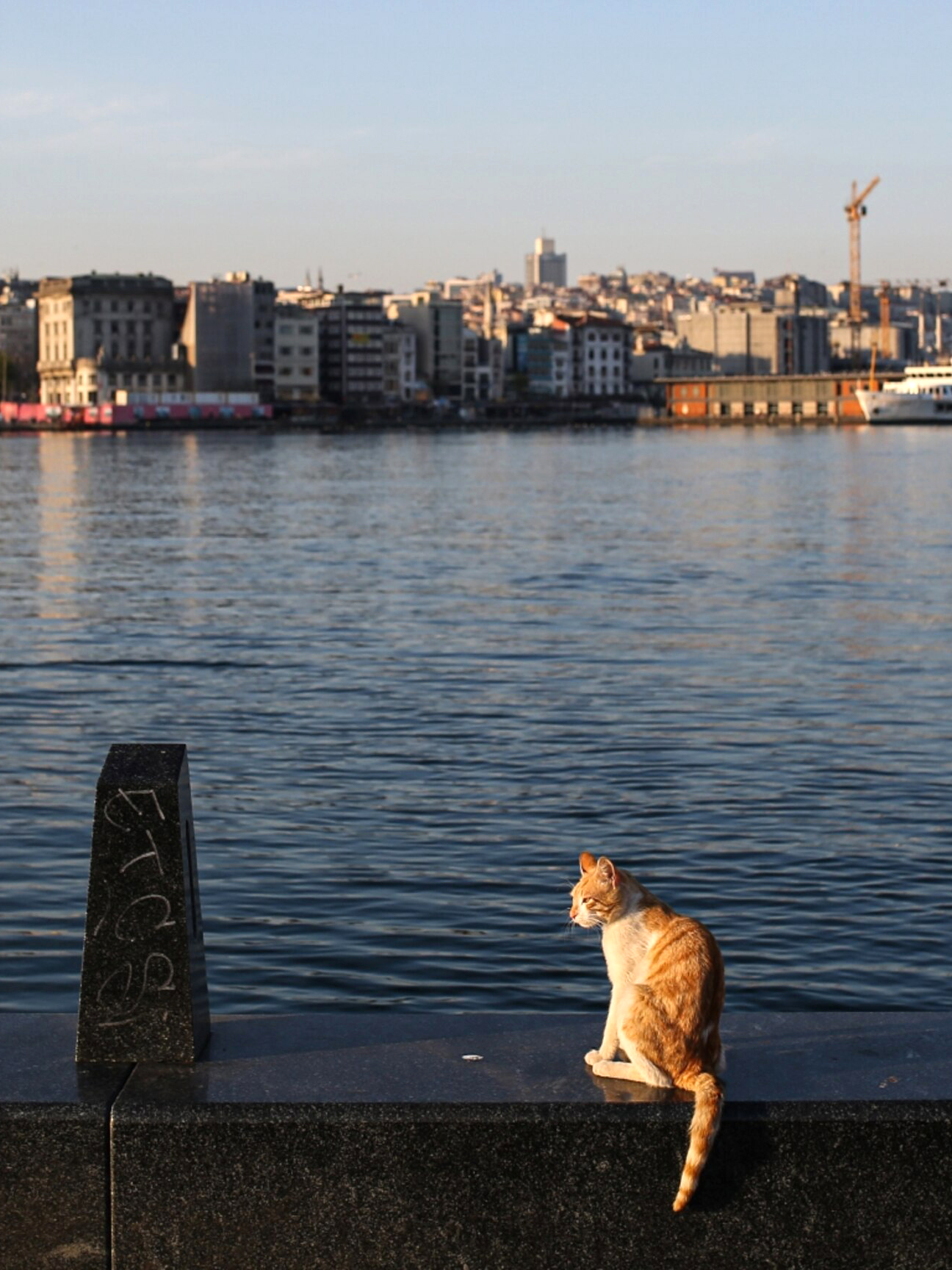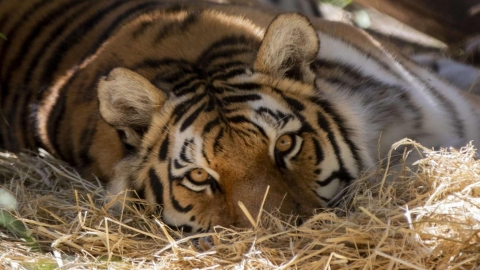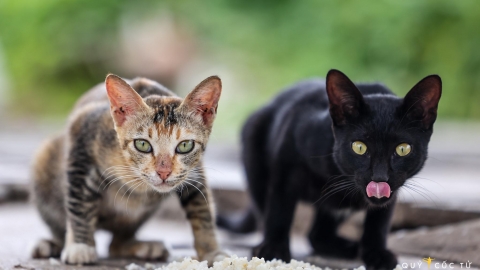What happens to stray cats and dogs when tourists disappear?
Cem Arslan rides his electric scooter from the ferry terminal to his home on Istanbul’s Kınalıada Island. The journey is short, but he can’t seem to go fast. Previously, the steepness of the mountain roads was probably the only reason he slowed down. But now, he also slows to a crawl, to let stray cats cross the road safely, or to say hello to a pack of dogs he’s grown too familiar with.
The Turkish city of Istanbul is famous for its large animal presence on its streets—especially its cats. The city’s felines have been the subject of documentaries and viral videos, become Instagram stars for celebrities, and appear in nearly every tourist photo. Cats hang out outside butcher shops, fishmongers, and sidewalk cafes; pose in front of historical landmarks; and sleep on the counters of local grocery stores. But what visitors see is only a small fraction of the reality, with the city’s stray cat population estimated at between 400,000 and 600,000.
“When I first moved to Kınalıada, I saw a lot of cats and dogs wandering around looking for food in the winter,” Arslan said. He set up a rescue station, helping around 1,000 stray cats and 200 stray dogs. He also adopted a gentle dog and three cute fluffy cats.

Noor Ali, a resident of Karachi, near Clifton Beach (Pakistan) feeds a pack of stray dogs - Photo: Asif Hassan, Afp/Getty Images
As a popular tourist destination, Kınalıada is bustling with around 30,000 people in the summer, and only around 300 the rest of the year. If the weather is bad, ferries can be cancelled, and if your cat or dog needs medical attention, there is absolutely no way around it, as the nearest veterinary service is on the mainland.
Over the past two years, many countries around the world have faced a dilemma: What will happen to stray dogs and cats on the streets when their food sources and necessary care suddenly disappear? The Covid-19 pandemic has forced major cities to close and tourism activities to a standstill. At that time, not only human life fell into chaos, but also tens of millions of animals on the streets faced difficulties. But countries have more serious problems to solve, cannot focus on caring for dogs and cats, at the same time, cannot return to life as before overnight.
Cats wandering on the street
Like Istanbul, Montenegro's old town of Kotor is also famous for its stray cats, and even has a Cat Museum built there. Around the world, popular tourist attractions are also popular with animals, from traditional markets to ancient ruins, green parks, scenic spots, and bustling big cities. In these places, cats and dogs can find plenty of safe places to rest and hide. When tourism is affected, the impact of the lack of visitors on the animals can be seen immediately.
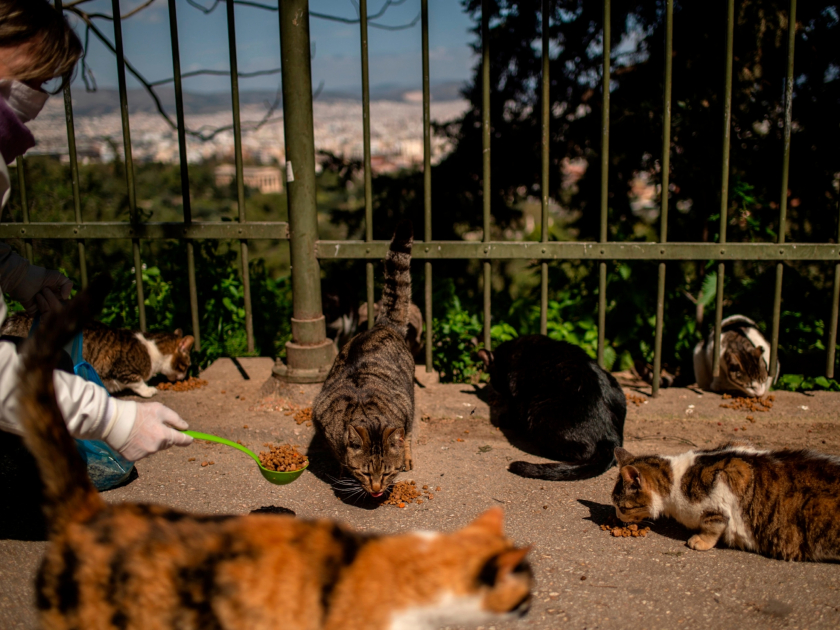
Eleni Kefalopoulou of Nine Lives Greece feeds stray cats in Athens - Photo: Angelos Tzortzini, Afp/Getty Images
"Within a few days of the government ordering restaurants to close, almost all the bins that cats and dogs used to rummage through for food were empty," said April Lynn King, a volunteer and core member of Kotor Kitties, a charity that helps street animals in Montenegro. "People wrote to us saying that the cats in their neighbourhood were crying with hunger."
The drop in tourism income has also indirectly affected animals. “For example, entire streets in Bali have closed because people who are unemployed have been forced to return to their hometowns,” says Katherine Polak, a veterinarian and director of wildlife care in Southeast Asia at Four Paws International, a global animal welfare organization. Those who have managed to stay are struggling to care for their pets. Pet abandonment rates have soared in many places due to economic hardship and concerns about the potential spread of Covid-19 through animals.
There are more animals on the streets, and fewer people to chase them away. This means they have more freedom, more opportunities to mate, causing their numbers to skyrocket. Meanwhile, sterilization services and adoption support programs are constantly being suspended or limited, due to social distancing or tight budgets. At the same time, many domestic dogs and cats are having to venture out to find food, easily causing conflicts with stray dogs and cats that have already claimed their territory; encountering bad people or getting into traffic accidents.
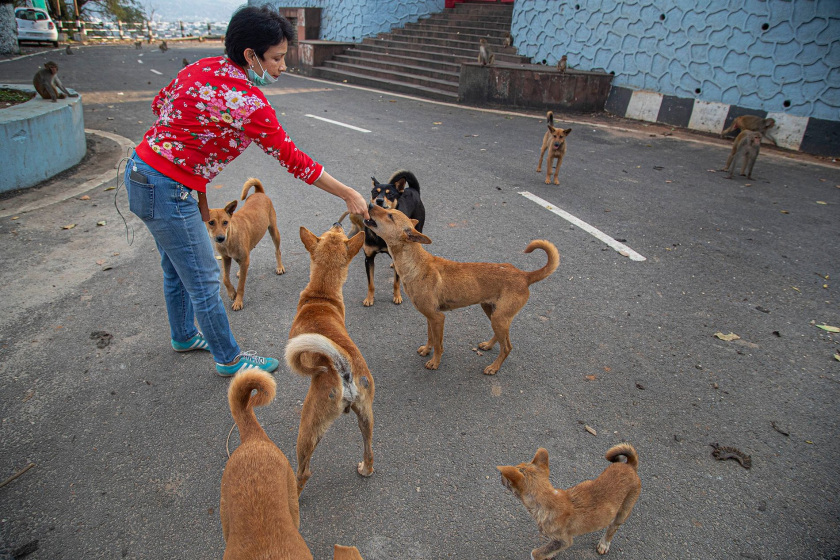
Oineetam Oza, a social worker, feeds biscuits to stray dogs near a Hindu temple in Gauhati, India - Photo: Nat Geo
“In Athens, the death rate of cats being hit by cars has skyrocketed, because they are so hungry that they are willing to risk their lives crossing the road, and the traffic has decreased so much that there are no traffic jams that make drivers slow down,” says Cordelia Madden-Kanellopoulou, co-founder of Nine Lives Greece, a Greek cat charity. She is also a volunteer who is responsible for caring for more than 1,000 cats. “That is only a small fraction of the cats in the city,” she says.
With fewer tourists and fewer people out and about, there is less awareness of injured dogs and cats on the streets, and fewer people to report them to charities and rescue stations. Ahmet Ali Yağcı, head veterinarian at the Istanbul Animal Rescue Center, says his staff has received half the number of reports of animals needing medical attention compared to pre-pandemic times.
Contribute to Action
There are many ways for tourists to help these stray animals, although Covid-19 is not gone yet. When the situation stabilizes and organized tours resume, you can join special tours.Nine Lives GreeceThere are often tours to visit the cats that the rescue organization has rescued, plus hiking trips to historical sites that are associated with cats. One of the most well-known activities for the support of stray cats and dogs in Phuket, Thailand, is theSoi Dog Organization, taking visitors to the animal rescue center, accompanied by playing activities with puppies.





